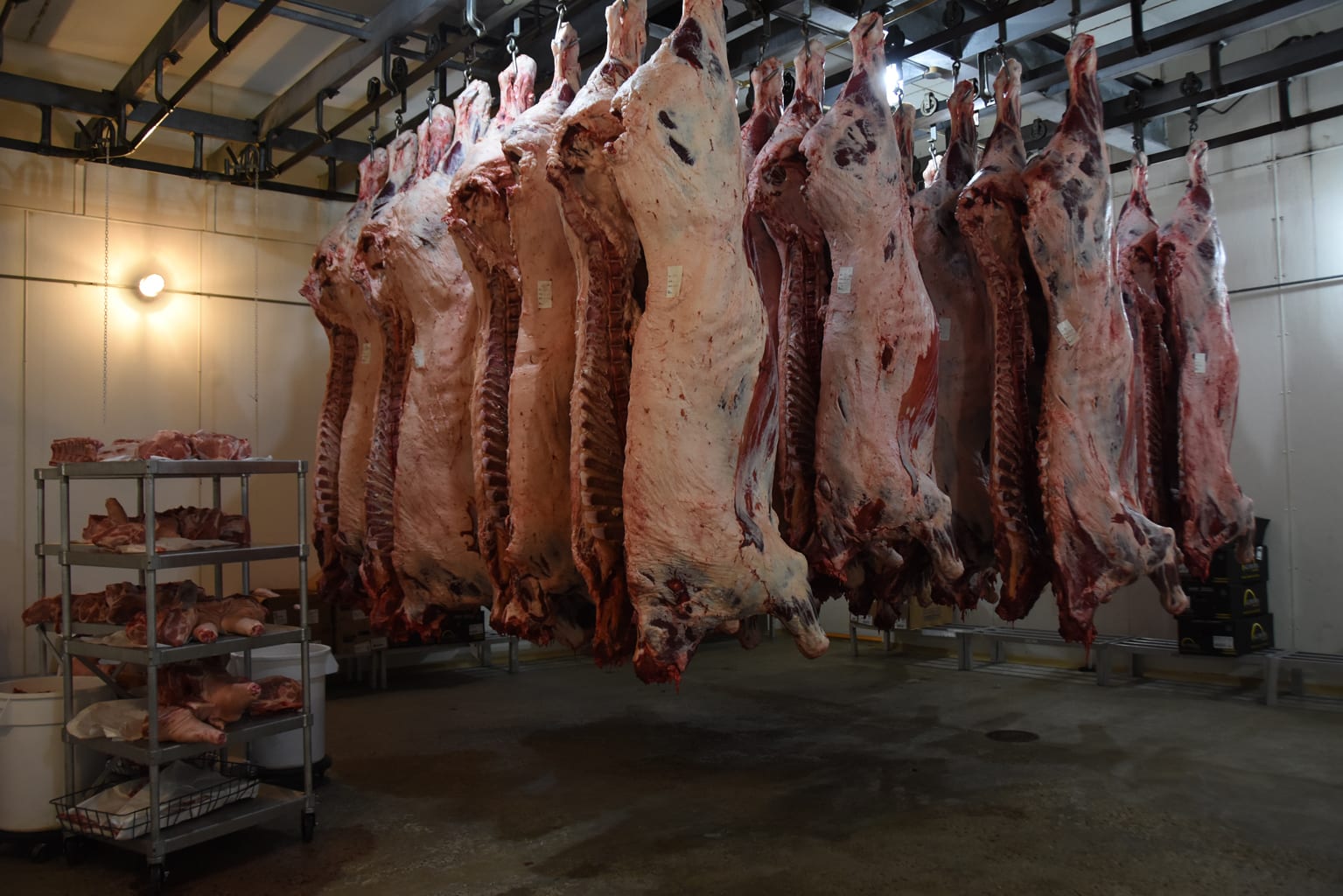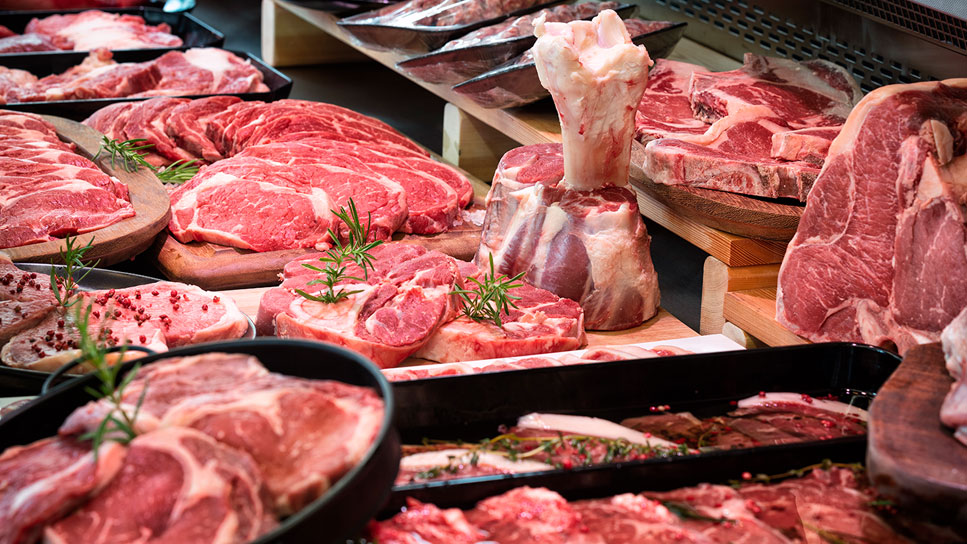Get top-notch service and premium meats at Bagley Meat Market Edwardsville IL.
Get top-notch service and premium meats at Bagley Meat Market Edwardsville IL.
Blog Article
How to Pick the Perfect Cut of Meat From a Trusted Meat Market
Choosing the perfect cut of meat from a relied on meat market calls for a thoughtful approach that balances high quality, cooking objective, and spending plan. Understanding the numerous types of meat and their corresponding cuts is crucial, as is engaging with your butcher to obtain insights right into sourcing and preparation.
Recognizing Meat Cuts


For instance, the tenderloin is prized for its buttery appearance and minimal connective tissue, making it excellent for fast cooking approaches such as grilling or pan-searing. On the other hand, tougher cuts like the brisket or shank take advantage of sluggish food preparation techniques to break down collagen, generating rich and flavorful outcomes.
In addition, the fat content of a cut plays an essential function in flavor profile and wetness retention during food preparation. Cuts with greater fat material, such as ribeye, supply a more durable taste, while leaner alternatives, like sirloin, might call for careful prep work to avoid dry skin (bagley meat market edwardsville il). Comprehending these subtleties permits for notified choices that raise culinary creations, making sure that each dish showcases the most effective qualities of the chosen meat
Variables to Think About
When picking the perfect cut of meat, numerous important aspects enter play that can considerably influence the last dish. Firstly, think about the sort of meat you prefer-- beef, pork, lamb, or chicken-- as each deals unique flavors and appearances. The specific cut within that category is similarly crucial; for circumstances, ribeye supplies rich marbling, while tenderloin provides a lean, buttery appearance.
Another element is the cooking technique you prepare to utilize. Cuts ideal for grilling, such as T-bones or sirloins, differ from those better suited for slow cooking, like chuck roasts or shanks. Furthermore, quality is vital; constantly select meat with a lively shade and company appearance, signifying top quality and correct handling.
Premium cuts might use remarkable preference, but there are also cost-efficient choices that, when prepared correctly, can produce delicious outcomes. Balancing these variables will aid you select the perfect cut for your culinary demands.
Questions to Ask Your Butcher
A butcher's proficiency can be invaluable when choosing the excellent cut of meat for your culinary ventures. Begin by inquiring regarding the resource of the meat.
Following, inquire about the different cuts readily available for the type of meat you like. A knowledgeable butcher will discuss the subtleties of each cut, assisting you choose one that matches your cooking technique and wanted result. Don't hesitate to ask about the most effective food preparation methods for a details cut; butchers commonly have pointers that can boost your recipe.
It's also sensible to inquire about the meat's freshness. Inquire regarding the shipment schedule and how frequently the meat is restocked. This will provide you confidence in the high click this quality of what you are buying. Finally, ask for referrals based upon your individual taste preferences. An excellent butcher will be eager to share their proficiency and suggest cuts that will certainly delight your palate. Involving your butcher with these concerns my latest blog post can substantially improve your meat option experience.
Identifying Quality Meat

Appearance is one more critical factor; top quality meat must feel strong and a little springy to the touch. Prevent any type of cuts that feel slimed or excessively completely dry, as these can suggest putridity or inappropriate storage. Additionally, smell plays a crucial duty; fresh meat must have a tidy, neutral fragrance, while any repulsive or sour odors are warnings.
Lastly, take into consideration the source. Buying from a respectable meat market, where the meat's origin is recognized, can make certain better criteria. By focusing on these indications-- color, marbling, structure, scent, and source-- you can with confidence pick cuts that will raise your cooking and eating experience.
Food Preparation Techniques for each and every Cut
Selecting the ideal food preparation technique is paramount for making best use of the flavor and tenderness of each cut of meat. Various cuts have unique qualities that determine one of the most suitable cooking methods.
For tender cuts, such as filet mignon or ribeye, dry warm techniques like grilling, broiling, or pan-searing are perfect. These techniques boost the natural tastes while making certain a juicy, delicious structure. Conversely, harder cuts, such as chuck or brisket, take advantage of moist warm techniques, including braising or slow-moving cooking. These approaches aid break down connective cells, leading to a tender, tasty recipe.
Pork chops and chicken busts are versatile and can be prepared making use of both completely dry and wet approaches. While grilling or roasting can produce tasty outcomes, poaching or sautéing can maintain moisture and tenderness. For lamb, techniques like roasting or braising are recommended, as they complement the meat's durable flavor.

Verdict
To conclude, choosing the perfect cut of meat from a credible meat market requires an extensive understanding of meat cuts and factor to consider of different elements, including resource, quality, and food preparation techniques. Engaging with the butcher with targeted queries can yield beneficial insights and referrals tailored to particular cooking demands. Focusing on both top quality and budget plan will certainly improve the total gastronomic experience, ensuring that the chosen cut meets assumptions in both flavor and prep work.
Report this page